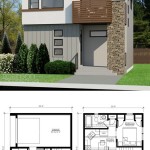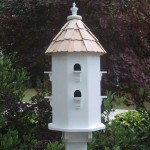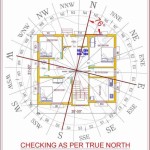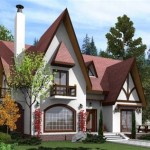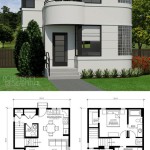Gooseneck Trailer Tiny House Plans: Maximizing Space and Functionality
The tiny house movement has gained significant traction in recent years, driven by a desire for minimalist living, financial freedom, and reduced environmental impact. Within this movement, gooseneck trailer tiny houses have emerged as a popular option, offering a unique blend of portability and spaciousness. Gooseneck trailers, characterized by their distinctive extended neck that connects over the tow vehicle's bed, provide a stable and secure towing experience while also allowing for a larger living area compared to traditional bumper-pull trailers. Consequently, gooseneck trailer tiny house plans require careful consideration to optimize space, functionality, and structural integrity.
Planning a gooseneck trailer tiny house involves navigating a complex interplay of design principles, building regulations, and personal preferences. Unlike traditional houses built on permanent foundations, tiny houses on wheels (THOWs) are subject to specific codes and standards that vary by location. Understanding these regulations is paramount to ensure the legality and safety of the dwelling. Furthermore, the inherent size limitations necessitate creative solutions for storage, living, and utility systems. This article will explore key considerations in developing effective gooseneck trailer tiny house plans.
Understanding Gooseneck Trailer Advantages and Limitations
The primary advantage of a gooseneck trailer lies in its superior stability and weight distribution. The hitch point located over the axle of the tow vehicle significantly reduces sway and improves handling, making it safer and easier to tow, especially at higher speeds or in challenging conditions. This stability translates to a smoother ride and less stress on the trailer structure. Furthermore, the gooseneck design typically allows for a longer trailer length without exceeding overall length restrictions, resulting in a larger usable living space within the tiny house.
However, gooseneck trailers also present certain limitations. The need for a tow vehicle with a bed-mounted hitch is a significant consideration. Trucks equipped for gooseneck towing are generally larger and more expensive than those used for bumper-pull trailers. Accessibility can also be a challenge, as the elevated gooseneck section can limit maneuvering in tight spaces. Finally, the cost of a gooseneck trailer itself is often higher than that of a comparable bumper-pull trailer, although this may be offset by the increased living space and enhanced stability.
Another critical factor is the weight capacity of the gooseneck trailer. Every trailer has a Gross Vehicle Weight Rating (GVWR), which represents the maximum permissible weight of the trailer and its contents. Exceeding the GVWR can compromise safety, damage the trailer, and violate legal regulations. Therefore, careful planning is essential to ensure that the weight of the tiny house, including building materials, appliances, furniture, and personal belongings, remains within the GVWR. This requires meticulous calculation and material selection to minimize weight without sacrificing structural integrity or functionality.
Designing for Space Optimization and Functionality
Given the limited square footage of a gooseneck trailer tiny house, space optimization is paramount. Multifunctional furniture, such as convertible sofas, folding tables, and storage beds, can significantly enhance living space and versatility. Vertical storage solutions, including shelving units, wall-mounted cabinets, and loft spaces, are essential for maximizing storage capacity without encroaching on floor space. Prioritizing essential items and minimizing clutter are key to maintaining a comfortable and functional living environment.
The layout of the tiny house should be carefully considered to ensure efficient flow and separation of living areas. A well-designed layout can create the illusion of spaciousness and improve overall livability. Consider incorporating open-concept designs to maximize natural light and create a sense of connection between different areas. Strategic placement of windows and doors can also enhance natural ventilation and minimize the need for artificial lighting. Careful consideration should also be given to the placement of utilities, such as plumbing and electrical systems, to minimize space requirements and ensure accessibility for maintenance and repairs.
The gooseneck portion of the trailer offers a unique opportunity to create a distinct living area. Often, this space is utilized as a bedroom, providing a private and cozy retreat. Alternatively, it can be used as an office, a reading nook, or a storage area. The elevated position offers the potential for panoramic views and enhanced privacy. However, it is important to consider the head height in the gooseneck area, as it may be limited by the trailer's structure. Careful planning is necessary to ensure that the space is both functional and comfortable.
Addressing Structural Considerations and Building Codes
Building a tiny house on a gooseneck trailer requires a solid understanding of structural engineering principles and building codes. The trailer frame must be reinforced to support the weight of the tiny house and withstand the stresses of transportation. Proper fastening techniques are essential to ensure that the house is securely attached to the trailer frame. It is crucial to consult with qualified engineers and builders to ensure that the design meets applicable codes and standards.
The choice of building materials is also critical to structural integrity and weight management. Lightweight materials, such as engineered lumber, metal framing, and composite siding, can reduce the overall weight of the tiny house without compromising strength. It is important to select materials that are durable, weather-resistant, and fire-resistant. Furthermore, the materials should be compatible with the climate in which the tiny house will be located. Insulation is another important consideration, as it can significantly impact energy efficiency and comfort. Proper insulation can help to regulate temperature, reduce noise, and prevent condensation.
Electrical and plumbing systems must be designed and installed in accordance with applicable codes and standards. Electrical wiring must be properly grounded and protected from damage. Plumbing systems must be designed to prevent leaks and ensure proper drainage. It is also important to consider water conservation measures, such as low-flow fixtures and rainwater harvesting systems. The incorporation of solar panels and other renewable energy sources can further reduce the environmental impact of the tiny house. It is highly recommended to engage licensed electricians and plumbers to ensure the safe and compliant installation of these systems.
Securing the tiny house for travel and habitation requires careful consideration. Tie-down points should be strategically located and securely anchored to the trailer frame. These tie-downs will help to stabilize the tiny house and prevent movement during transportation or high winds. Additionally, leveling jacks should be used to stabilize the trailer when it is parked for habitation. These jacks will help to ensure that the floor is level and prevent the trailer from rocking or swaying.
Navigating the legal and regulatory landscape for tiny houses on wheels can be challenging, as codes vary significantly by location. Some jurisdictions have specific regulations for tiny houses, while others treat them as recreational vehicles (RVs) or accessory dwelling units (ADUs). It is important to research the local codes and regulations before beginning construction. In some cases, it may be necessary to obtain permits or inspections to ensure compliance. Failure to comply with local regulations can result in fines, legal action, or even the forced removal of the tiny house.
Developing gooseneck trailer tiny house plans requires significant planning, research, and expertise. By carefully considering the advantages and limitations of gooseneck trailers, optimizing space and functionality, and addressing structural considerations and building codes, individuals can create a comfortable, sustainable, and legally compliant tiny house on wheels. The flexibility and portability of a gooseneck trailer tiny house offer a unique opportunity to embrace a minimalist lifestyle while exploring new places and pursuing financial freedom.

Guide To Building A Gooseneck Tiny House And Fifth Wheel Homes The Life

Ever Thought Of A Gooseneck Tiny House Design Floor Plans Trailer Layout

Guide To Building A Gooseneck Tiny House And Fifth Wheel Homes The Life

Guide To Building A Gooseneck Tiny House And Fifth Wheel Homes The Life

Mitchcraft 30 Gooseneck Tiny Home Perfect For Our Family Of 6 House Floor Plans On Wheels

Gooseneck Tiny Homes Living

Guide To Building A Gooseneck Tiny House And Fifth Wheel Homes The Life

The Updated Layout Tiny House Floor Plans

Tiny House Floor Plans 32 Long Home On Wheels Design

Guide To Building A Gooseneck Tiny House And Fifth Wheel Homes The Life

